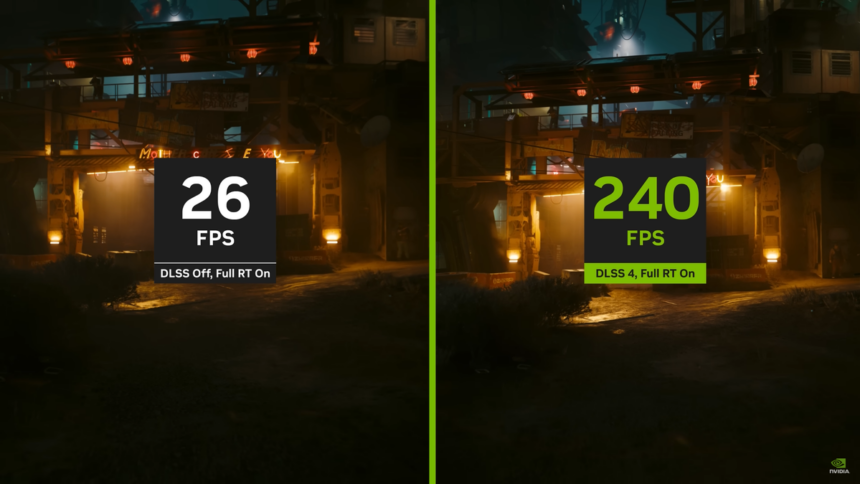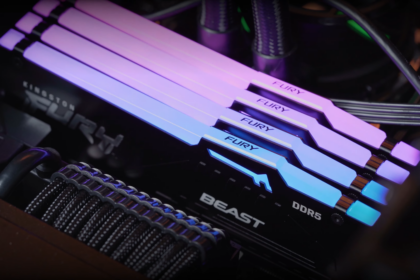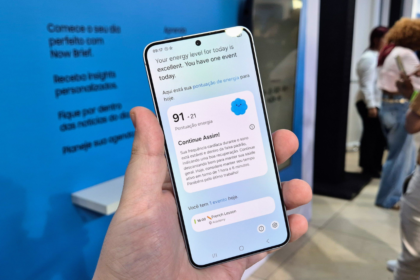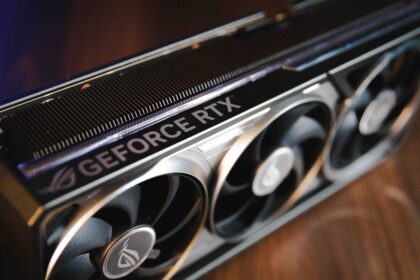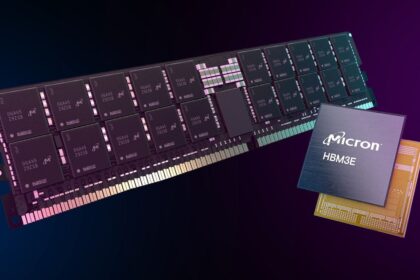Alongside the GeForce RTX 50 series launch, NVIDIA unveiled DLSS 4, which introduces the innovative Multi Frame Generation feature. This enhancement builds upon existing technologies in the DLSS package, offering significant performance and visual quality improvements.
As anticipated, the new DLSS 4 technology will be exclusive to the RTX 50 series GPUs, similar to how Frame Generation was a standout feature for the RTX 40 series. With every new RTX generation, NVIDIA continues to add unique advancements to DLSS, ensuring that these cutting-edge capabilities remain tied to the latest hardware innovations.
Benefits of DLSS 4’s Multi Frame Generator
As the name implies, Multi Frame Generation generates multiple AI-created frames—specifically, three artificial frames inserted between the GPU-rendered frames. This marks a significant evolution from the first generation of Frame Generation, which only added a single AI-generated frame between two real ones.
This breakthrough is made possible by NVIDIA’s Blackwell architecture and the advanced Tensor Cores, designed to handle demanding AI workloads. With DLSS 4 enabled, gamers can experience substantial performance boosts.
For example, NVIDIA demonstrated this capability with Cyberpunk 2077 on an RTX 5090 running at 4K resolution, with maximum ray tracing and graphics settings. Without DLSS 4, the game struggles to exceed 30 FPS natively. However, with DLSS 4 activated, performance skyrockets to an average of 240 FPS, offering a vastly smoother and more immersive experience.
Interestingly, NVIDIA acknowledged that even the powerful RTX 5090 cannot achieve 30 FPS under these extreme conditions without DLSS 4, underscoring the importance of this technology in future gaming experiences.
DLSS 4 boosts RTX 50 gaming performance
With its cutting-edge Multi Frame Generation technology, DLSS 4 can deliver up to 9x more performance, as demonstrated with the RTX 5090. However, NVIDIA notes that performance gains will vary depending on the game and the specific RTX 50 series GPU.
In addition to the impressive performance boost, DLSS 4 ensures image quality matches these advancements. The Super Resolution and Ray Reconstruction features have been further refined, while the traditional Frame Generator has been optimized to use less video memory.
Even before its official launch, DLSS 4 already supports 75 games and applications, showcasing broad compatibility. The technology will debut at the end of January 2025 alongside the first Blackwell GPUs, the RTX 5090 and RTX 5080.

